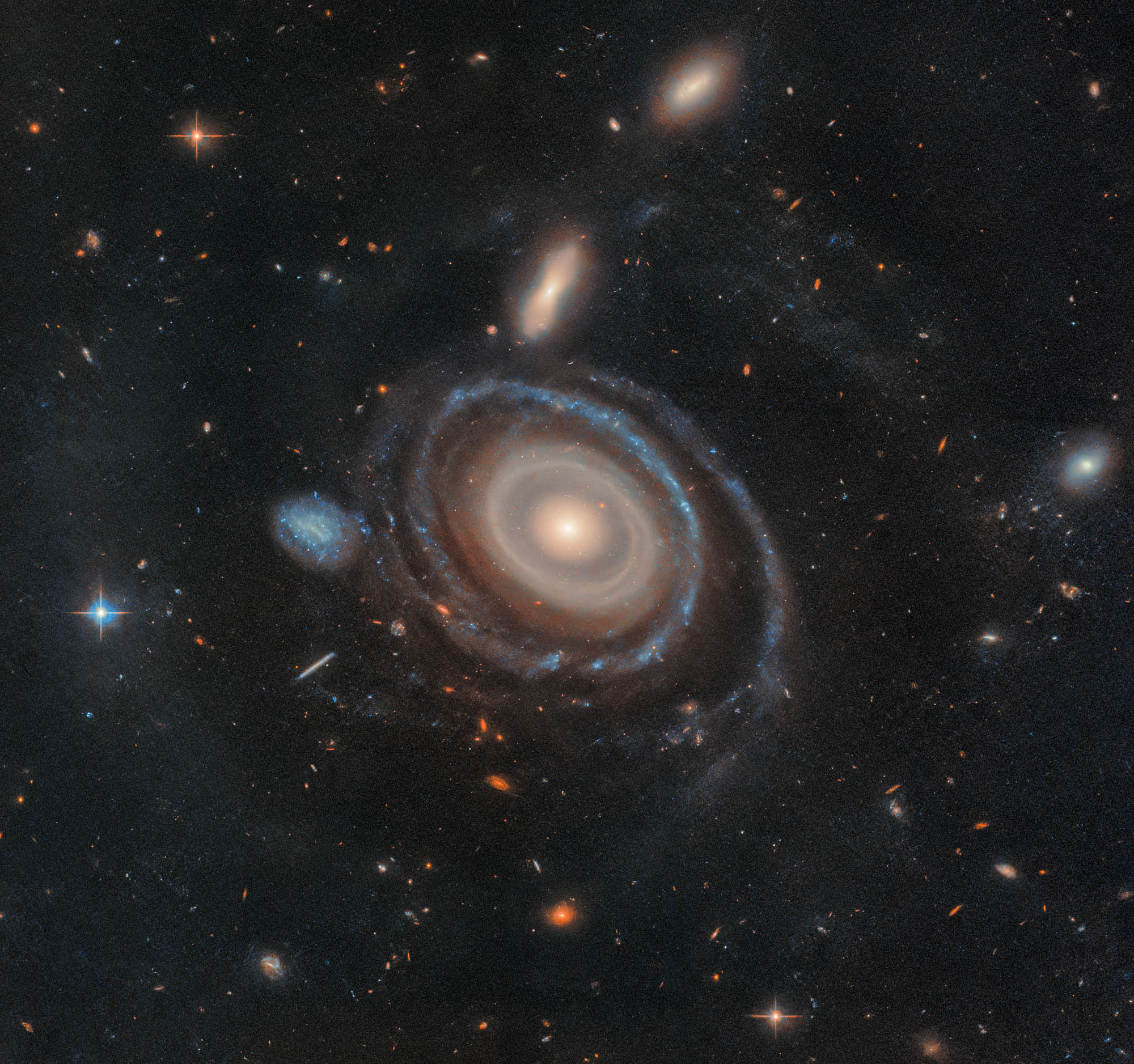Straight Shot: Hubble Investigates Galaxy with Nine Rings

NASA’s Hubble Space Telescope has captured a cosmic bullseye! The gargantuan galaxy LEDA 1313424 is rippling with nine star-filled rings after an “arrow” — a far smaller blue dwarf galaxy — shot through its heart. Astronomers using Hubble identified eight visible rings, more than previously detected by any telescope in any galaxy, and confirmed a ninth using data from the W. M. Keck Observatory in Hawaii. Previous observations of other galaxies show a maximum of two or three rings.
“This was a serendipitous discovery,” said Imad Pasha, the lead researcher and a doctoral student at Yale University in New Haven, Connecticut. “I was looking at a ground-based imaging survey and when I saw a galaxy with several clear rings, I was immediately drawn to it. I had to stop to investigate it.” The team later nicknamed the galaxy the “Bullseye.”
Hubble and Keck Observatory’s follow-up observations also helped the researchers prove which galaxy plunged through the center of the Bullseye — a blue dwarf galaxy to its center-left. This relatively tiny interloper traveled like a dart through the core of the Bullseye about 50 million years ago, leaving rings in its wake like ripples in a pond. A thin trail of gas now links the pair, though they are currently separated by 130,000 light-years.
“We’re catching the Bullseye at a very special moment in time,” said Pieter G. van Dokkum, a co-author of the new study and a professor at Yale. “There’s a very narrow window after the impact when a galaxy like this would have so many rings.”
Galaxies collide or barely miss one another quite frequently on cosmic timescales, but it is extremely rare for one galaxy to dive through the center of another. The blue dwarf galaxy’s straight trajectory through the Bullseye later caused material to move both inward and outward in waves, setting off new regions of star formation.
How big is the Bullseye? Our Milky Way galaxy is about 100,000 light-years in diameter, and the Bullseye is almost two-and-a-half times larger, at 250,000 light-years across.
The researchers used Hubble’s crisp vision to carefully to pinpoint the location of most of its rings, since many are piled up at the center. “This would have been impossible without Hubble,” Pasha said.
They used Keck Observatory to confirm one more ring. The team suspects a 10th ring also existed, but has faded and is no longer detectable. They estimate it might lie three times farther out than the widest ring in Hubble’s image.
